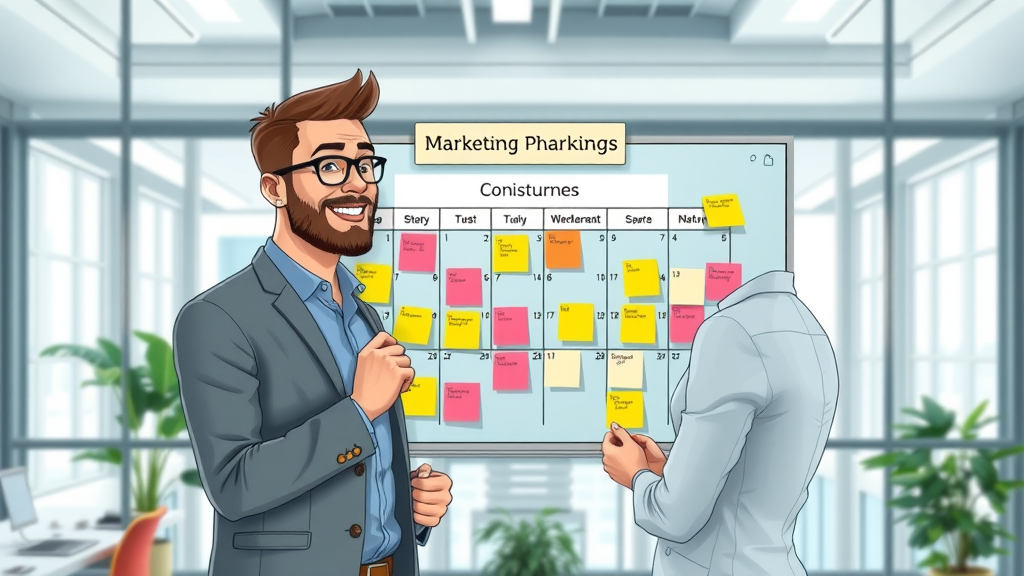Opening Hook: Surprising Statistics on Content Distribution Channels
Did you know that over 60% of marketers say their biggest challenge isn’t content creation—but content distribution? In fact, most businesses distribute just 25% of their content through channels that deliver meaningful results. If your blog posts, videos, or infographics are falling flat, it’s likely not an issue with quality. It’s about leveraging the right content distribution channels to maximize your reach efficiently. This guide reveals how to stop wasting time and start amplifying your content marketing strategy—using proven, scalable, and time-saving distribution strategies.

Why Most Brands Underestimate Content Distribution Channels Efficiency
Many brands invest heavily in content creation but neglect the strategy behind distribution. They might publish a blog post or share a media post on one or two social media platforms, expecting the audience to discover it organically. What they don’t realize is that distribution channels each bring their own unique strengths—and when used together, they can significantly boost brand awareness, reach, and engagement. Businesses often fail to see that sharing content across multiple media channels, utilizing email newsletters, leveraging paid ads, and pursuing earned distribution not only drives more traffic but does so with less manual effort. By underestimating the importance of content distribution strategy, they lose out on potential growth, engagement, and ROI.
What You'll Learn: Fast-Tracking Success with Content Distribution Channels
- Understand different content distribution channels and their impact
- Explore proven content distribution strategies
- Identify efficient distribution channels for content marketing
- Discover time-saving techniques for audience targeting and engagement
- Evaluate paid, owned, and earned distribution channels
Understanding Content Distribution: What Are Content Distribution Channels?
Definition and Importance of Content Distribution Channels
Content distribution channels are the platforms, networks, and mediums used to share your content with your target audience. This includes social media, email newsletters, blogs, paid ad networks, and more. Distribution channels amplify your content marketing by ensuring your articles, videos, infographics, and other types of content reach people where they are most active. Without a thoughtful distribution strategy, even the most engaging content risks being overlooked. By mastering content distribution (including earned, paid, and owned channels), brands can build consistent audience engagement, outpace competitors, and accelerate their return on content investment.

Types of Content Distribution Channels: Owned, Earned, and Paid
Not all distribution channels are created equal. There are three primary categories: Owned, Earned, and Paid. Owned channels (like your website, blog, or email newsletters) allow you full control over the message and timing. Earned channels refer to external endorsements, such as press releases, guest posting, and media mentions—essentially, attention you “earn” through relationships and credibility. Paid channels, meanwhile, involve investment in sponsored content, paid ads, or influencer collaborations to boost reach with precision. Balancing these three helps you reach a broader audience and maximize engagement across all stages of the customer journey.
| Channel Type | Examples | Control | Cost | Reach | Time Investment |
|---|---|---|---|---|---|
| Owned | Website, Blog Posts, Email Newsletters | Full | Low | Varies (depends on audience size) | Low to Moderate |
| Earned | Press Releases, Guest Posts, Media Mentions | Shared | Low (but time intensive) | High (if picked up by large platforms) | High (due to outreach) |
| Paid | Paid Ads, Sponsored Content, Influencer Marketing | Partial | High | Broad (targeted reach) | Low (quick, with budget) |
Choosing the Right Content Distribution Strategy for Your Brand
Finding the best content distribution channels for your brand means knowing your target audience, the types of content they engage with, and the platforms where they’re most active. “Effective content distribution channels can multiply your reach while reducing effort.” A balanced distribution strategy might combine owned media like email newsletters with paid content ads and, when possible, encourage earned media through partnerships and press releases. The key is to align your distribution approach with your business goals, available resources, and audience habits—then iterate based on analytics.
Core Content Distribution Strategies for Maximum Impact
Owned Content Distribution: Your Website, Email Newsletters, and More
Owned media channels are the foundation of long-term content marketing. When you publish content to your website or send an email newsletter, you maintain full control and build a direct relationship with your audience. Email newsletters, in particular, are powerful for delivering updates, promoting new blog posts, and nurturing leads over time. Consistent email campaigns can significantly improve brand awareness, generate repeat visits, and support every phase of your sales funnel. Don’t overlook updating your blog and website regularly—this sustains SEO value, showcases thought leadership, and keeps your brand top-of-mind.

Earned Media Channels: Press Releases, Guest Posting, Media Mentions
Earned content distribution channels involve getting others—like journalists, industry leaders, or high-authority blogs—to share your content. Techniques such as distributing an engaging press release, securing guest posting opportunities, and building media post relationships lead to mentions on reputable media platforms. While these opportunities take time and persistence, the reward is third-party validation, increased referral traffic, and valuable backlinks that boost your overall SEO efforts. The credibility of earned media channels helps position your brand as an authority within your field and extends your organic reach exponentially.
Paid Content Distribution Channels: Sponsored Content and Paid Ads
Paid content distribution offers speed and specificity—ideal for quickly scaling reach or targeting a precise demographic with your content. Sponsored content and paid ads let you appear exactly where your target audience spends time: in their social media feeds, alongside search results, or on popular blogs. The effectiveness of a paid channel comes down to strategic targeting, creative messaging, and ongoing optimization. Investing in paid content delivers measurable impact, but tracking ROI and ensuring you choose the right platforms for your goals is essential for maximizing outcomes.
Hybrid Content Distribution Strategies for Different Types of Content
The most successful brands don’t rely on just one distribution channel; instead, they blend owned, earned, and paid channels for each type of content. For example, a whitepaper may be distributed via your corporate blog, amplified with a press release, and supported through sponsored content on LinkedIn. Meanwhile, a short video might be published on your website, shared on multiple social media, and promoted through paid ads for quick exposure. Customizing your hybrid content distribution strategy according to campaign objectives ensures you maximize every asset’s potential reach and engagement.
Top Content Distribution Channels to Save Time

Social Media Platforms: Fast Reach on Facebook, LinkedIn, Twitter, Instagram
Social media platforms like Facebook, LinkedIn, Twitter, and Instagram are some of the most efficient content distribution channels available. With billions of monthly users, these platforms offer unparalleled audience access and engagement tools. By scheduling your blog posts, infographics, and media posts on a social media calendar, you can automate your outreach for speed and consistency. Each platform caters to different types of content and audience preferences—Facebook for community and viral sharing, LinkedIn for B2B professionals, Twitter for timely updates, and Instagram for visuals and stories. Employing social media posts effectively multiplies your content’s visibility while saving time on manual publishing.
Email Newsletters: Direct Access to Your Target Audience
Email newsletters deliver your message straight to your subscribers’ inboxes, circumventing algorithm changes and social noise. Whether sharing a new blog post, launching a product, or distributing evergreen content, email newsletters give you direct access to your most loyal readers. Platforms like Mailchimp, ConvertKit, or HubSpot streamline campaign management and enable audience segmentation for even sharper targeting. Over time, building an engaged list of subscribers amplifies every piece of content—turning your email newsletter into a core pillar of your content distribution strategy.
Content Distribution Channel Examples: YouTube, Podcasts, and Blogs
YouTube is a powerhouse for video content, offering discovery features and a vast, engaged audience. Podcasts provide a unique channel to reach listeners during their daily commute or routine, ensuring brand exposure in a less crowded medium. Blogs remain highly effective for SEO and long-form content, anchoring your owned distribution with searchable assets that can also be syndicated or repurposed across your media channels. Each of these examples showcases how a targeted content distribution channel can quickly expand your content marketing reach and enhance audience interaction.
Content Syndication Platforms and Aggregators
For brands seeking scalable reach, content syndication platforms and aggregators can increase visibility by redistributing your blog posts or infographics across a network of partner sites. Examples include Outbrain, Taboola, and Medium. These channels drive traffic from otherwise untapped sources, attracting new audiences without requiring additional content creation. Aggregators like Feedly or Flipboard curate content for niche audiences, turning your articles into featured resources. This approach maximizes your existing content investment, saves time, and broadens your exposure beyond your owned platforms.
| Channel | Best For | Engagement | Speed | Time Investment | Audience Control |
|---|---|---|---|---|---|
| Social Media | Viral sharing, awareness, community building | High (if content resonates) | Immediate | Moderate (automation available) | Medium (subject to algorithms) |
| Email Newsletters | Direct communication, repeat engagement | High with a qualified list | Scheduled (flexible) | Moderate (requires list nurturing) | Full (you own your list) |
| Syndication | Scalable reach, tapping new audiences | Moderate to high | Fast (network distribution) | Low to moderate | Low (dependent on 3rd party policies) |
"Selecting the right distribution channel transforms content marketing from a chore into a strategic asset."
How to Tailor Content Distribution Channels to Your Target Audience

Identifying Your Ideal Target Audience Across Media Platforms
It’s not enough to distribute content widely; relevance is what drives results. Begin by researching your target audience using demographic data, buying behaviors, and digital habits. Audience analytics from platforms like Google Analytics, Facebook Insights, or LinkedIn Analytics provide actionable intelligence: where your audience spends time, which content formats they prefer, and what messages resonate. With this understanding, you can map your media platforms and time-saving distribution efforts to maximize campaign efficiency and effectiveness.
Matching Content Types to Distribution Channel Preferences
Each media channel has its strengths. For instance, insights-heavy blog posts perform best on LinkedIn or email newsletters, while bite-sized tips and visuals thrive on Instagram, Twitter, or Facebook. Distribute video content on YouTube and short clips on Instagram Reels or TikTok to engage younger audiences. Aligning types of content with the right distribution channel ensures your message isn’t just seen, but appreciated—leading to increased engagement, shares, and conversions.
Optimizing Content Creation for Each Distribution Channel
Successful distribution starts during content creation. Optimize every asset for its intended platform: use compelling thumbnails for YouTube, write engaging subject lines for email newsletters, and craft concise, attention-grabbing copy for social media posts. Repurpose longer content into bite-sized pieces or infographics for syndicators. Customization can improve performance for every content distribution channel and save time by reducing post-publishing edits.
Leveraging Analytics: Measure Your Content Distribution Strategy’s Success
Consistently track performance of all distribution channels with tools like Google Analytics, UTM tracking, and social platform insights. Key metrics include click-through rates, conversions, traffic, and engagement scores. Analyze which channels are driving the most value to inform adjustments to your content distribution strategy, ensuring ongoing optimization and time efficiency.
Paid Versus Organic Content Distribution Channels—Which Is Right for You?
Overview of Paid Content Distribution and Paid Ad Options

Paid content distribution channels amplify your reach through sponsored content, display ads, paid search (PPC), and promoted social posts. These paid channels are ideal for campaigns needing instant exposure or targeting highly specific audiences based on location, interests, or behaviors. Popular paid ad options include Facebook Ads, Google Ads, LinkedIn Sponsored Content, and native content platforms like Outbrain or Taboola. Paid content delivers rapid, data-driven results, but costs can scale quickly—making careful budget management and performance tracking essential.
Organic Growth Through Social Media Platforms and SEO
Organic content distribution relies on building and nurturing your owned communities and SEO presence. By consistently delivering value through social media posts and optimizing your website for search engines, brands achieve sustainable, long-term growth at a lower financial cost. While organic reach on social media platforms can be limited by algorithms, content marketing and SEO can compensate with evergreen assets and consistent engagement. Combining organic and paid efforts often results in the greatest ROI.
Balancing Paid Channels with Owned and Earned Tactics
The winning formula is not “either/or,” but “and/also.” Smart brands deploy paid channels for instant traction, reinforce with ongoing owned content distribution, and strive for earned distribution to build third-party credibility. This mix ensures your brand is visible, trusted, and cost-effective. Routinely analyze campaign data to allocate future investments between paid content, owned digital assets, and partnerships delivering media mentions or press releases.
-
Pros and Cons of Paid Channels:
- Pros: Quick scaling, precise targeting, measurable results.
- Cons: Costs add up, reliant on ongoing spend, risk of audience fatigue.
- Case Studies: Effective Paid Channel Strategies.
- Budget Tips for Paid Content Distribution: Start small, test different audiences, measure ROI, and invest more where performance is highest. Never “set and forget”—adjust spending based on analytics.
"Achieving scale is not just about seeing your content everywhere; it’s about being seen by the right people, at the right time, using the right channels."
Distribution Channels for Different Types of Content
Best Distribution Channels for Video Content
Video is best served where attention spans are short and audiences crave engaging, visual education or entertainment. Platforms like YouTube, Facebook Video, Instagram Reels, and TikTok deliver the quickest, broadest reach for video content. Remember to optimize your videos for each platform (e.g., subtitles for Facebook, hashtags for Instagram, shorter clips for TikTok), and cross-promote through your website and email newsletters to maximize exposure.
Maximizing Reach with Infographics, eBooks, and Whitepapers
Highly visual types of content like infographics, eBooks, and whitepapers excel on platforms geared for sharing and resource library exposure. Pinterest, LinkedIn SlideShare, and industry-specific forums are examples of media channels that can give your resources extended life. Partnering with influencers or leveraging content syndication for downloadable resources expands your impact while saving time on repeated content creation.

Podcasts and Audio: Distribution Strategies for Fast Growth
Podcasts are surging in popularity, offering access to highly engaged, niche communities. Distribute audio content through Apple Podcasts, Spotify, and Google Podcasts, then amplify reach by sharing show notes and episode teasers on your website, social media, and email newsletters. Getting featured on other podcasts or media platforms as a guest speeds brand exposure and can quickly build a loyal listenership.
| Content Type | Best Distribution Channel | Primary Goal |
|---|---|---|
| Video | YouTube, Facebook Video, Instagram Reels, TikTok | Engagement, brand awareness |
| Infographics | Pinterest, LinkedIn, Industry Blogs | Visual sharing, backlinks |
| eBooks/Whitepapers | LinkedIn, Email Newsletters, Syndication | Lead generation, education |
| Podcasts | Spotify, Apple Podcasts, Google Podcasts | Loyalty, expert positioning |
Creating a Content Distribution Plan: Step-by-Step Guide
- Define goals and objectives
- Audit existing content distribution channels
- Analyze target audience preferences
- Select core channels for distribution
- Develop a publishing calendar
- Set up analytics and KPIs
- Iterate and optimize your distribution strategy

Content Distribution Tools That Save Time
Automation Platforms for Social Media and Email
Automation tools like Buffer, Hootsuite, Sprout Social, and Mailchimp streamline scheduling and publishing across multiple distribution channels. By batching your content creation and queuing posts across social media platforms or email newsletters, you save hours each week while maintaining a steady brand presence. These platforms often include analytics dashboards for real-time performance tracking and insights, allowing you to further optimize future campaigns.

Syndication and Aggregator Tools
For scalable reach, distribute your blog posts and articles through syndication services like Outbrain, Taboola, or Medium’s Partner Program. RSS aggregators such as Feedly help organize and push your content into curated channels where your target audience is already seeking information. These tools free you from manual submission and monitoring, making the process of distributing content seamless and time-effective.
Analytics Solutions for Content Performance Measurement
Measure your content marketing success with analytics platforms like Google Analytics, HubSpot, or social media insights dashboards. These solutions offer granular tracking of traffic sources, engagement, and conversions—empowering you to determine which distribution channels drive the best results. Set key performance indicators (KPIs) related to each channel, and review them regularly for actionable insights into your distribution strategy.
Common Mistakes to Avoid in Content Distribution Channels
- Ignoring audience segmentation
- Overlooking analytics
- Over-investing in paid channels without ROI tracking
- Underutilizing email newsletters
- Failing to customize content for each platform
Case Studies: Successful Content Distribution Channel Implementations
Example 1: B2B Content Distribution Strategy Success
A prominent B2B SaaS company revamped its content distribution strategy by combining owned blog posts, regular email newsletters, targeted LinkedIn sponsored content, and a series of guest posts on industry sites. This hybrid approach led to a 250% increase in website traffic, a doubling of qualified leads, and an 80% improvement in overall content engagement metrics—all while reducing manual publishing time by automating social media posts.

Example 2: Leveraging Social Media Platforms to Drive Engagement
A lifestyle retailer grew its brand awareness by developing a social media content calendar, integrating Instagram reels, Facebook stories, and community-led Twitter threads. Utilizing Buffer for scheduling, the brand saw a 300% spike in social media engagement and a significant uptick in direct online sales.
Example 3: Multichannel Approach for SaaS Companies
By supporting each blog post with a media post, paid ad, email newsletter, and content syndication, a SaaS startup was able to expand visibility across new markets within weeks. The result? Faster product adoption, higher search rankings, and an increased customer lifetime value.
Lessons Learned from Top Brands
The most successful brands share a few traits: consistent multi-channel publishing, regular performance measurement, and ongoing audience research. They invest in a content distribution strategy that saves time and delivers compounded results by continually adapting to new platforms, tools, and audience behaviors.
People Also Ask: Content Distribution Channels
What is a content distribution channel?
Answer: A content distribution channel is any platform, network, or medium used to share and promote your content to your target audience, including social media, websites, email newsletters, and paid platforms.
What are the four types of distribution channels?
Answer: The four types of distribution channels often referred to are direct, indirect, dual, and reverse channels, each representing a unique way content can reach its intended audience.
What is an example of a content distribution strategy?
Answer: An example of a content distribution strategy might include sharing blog posts through email newsletters, social media platforms, syndication networks, and utilizing paid ads to boost reach among specific demographics.
What is an example of a distribution channel?
Answer: A common distribution channel example for content marketing is social media platforms like LinkedIn or Facebook, where you can publish posts and interact with your audience directly.
FAQs: Content Distribution Channels
- How often should I review my content distribution channels? Review your distribution channel performance at least quarterly—or monthly if you’re scaling fast or testing new platforms. Regular review ensures optimal allocation of resources to the highest-performing channels.
- Which content distribution channels are best for B2B companies? B2B companies should prioritize LinkedIn, email newsletters, industry blogs, and guest posting for credibility and targeting. Paid LinkedIn ads can target decision-makers precisely.
- How can I measure ROI on different distribution channels? Use UTM codes, analytics dashboards, and goal tracking to attribute website visits, downloads, and conversions to each channel. Focus on metrics tied directly to business objectives.
- Is it better to invest in paid or organic distribution channels? A mix delivers the best results. Paid channels accelerate growth, while organic channels build long-term authority and cost savings.
- How do you identify new content distribution channels? Monitor industry trends, survey your audience, analyze competitors, and test emerging platforms to spot untapped opportunities relevant to your goals.
Key Takeaways: Save Time and Amplify Your Reach with Content Distribution Channels
- Choose distribution channels that align with your target audience
- Mix paid and organic strategies for greatest impact
- Measure and iterate your distribution strategy regularly
- Use automation tools to streamline your workflow
Conclusion: Start Saving Time with the Right Content Distribution Channels
Summary: The Power of Content Distribution Channels in Your Marketing Strategy
The right content distribution channels ensure your message is seen, heard, and acted on—without wasting valuable time.

Next Steps: Choose Your Channels and Optimize Today
Audit your current strategy, implement time-saving tools, and map out which platforms best match your content marketing goals. Remember, the most efficient channel is the one your audience actually uses—so plan, test, and refine.
 Add Row
Add Row  Add
Add 




Write A Comment